$100 National Bank Notes
One hundred dollar national bank notes, for the most part, are encountered infrequently. Some 1902 blue seals are readily available. However, pretty much everything else is rare and valuable. Not many banks printed such a high denomination, and the ones that did issue only printed in small numbers. The notes you see below are just design type examples. Your note will likely be from a different bank and town. Remember that the value is based on the condition, bank of issue, type, serial number, and signatures. Sales@AntiqueMoney.com
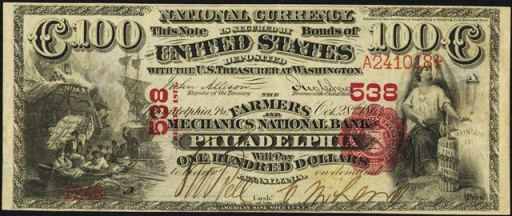
Right now there are somewhere between 90 and 100 of these first charter $100 national bank notes known to exist. Most of these notes are found on large east coast cities or large mid-west towns. Anything from the south or west should be considered scarce.
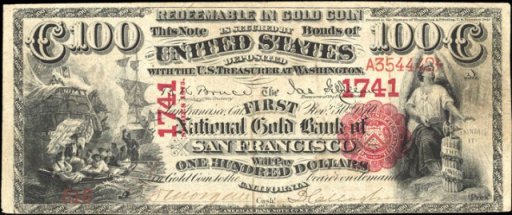
We know for a fact that nine $100 national gold bank notes exist. The great thing about currency is that everything comes with a serial number. It is very easy to track what is out there.
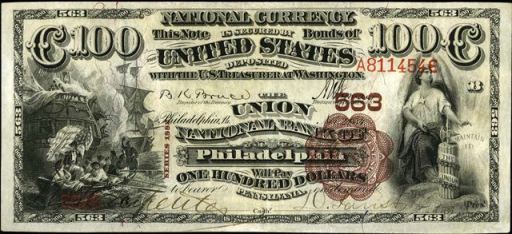
Series of 1882 $100 national bank notes are available at will. However, that does not mean that they are cheap. These one hundred dollar bills are tightly held and usually prized by each individual owner. Brown backs were printed between 1882 and 1908. Just over 1,000 banks issued this type and denomination.
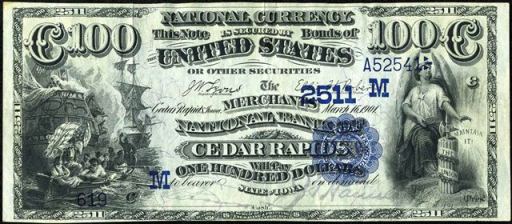
I actually really like series of 1882 $100 date backs. Date backs are normally really hit and miss, but the blue overprint mixes nicely with the the left and right vignettes. Surprisingly there are only about 130 $100 date backs known to exist. This makes them almost as rare as first charter and red seal hundreds. However, date backs can be bought at a fraction of the price the other notes would command. These are called date backs by collectors because the back of each bill has the year “1882 – 1908” printed on it.
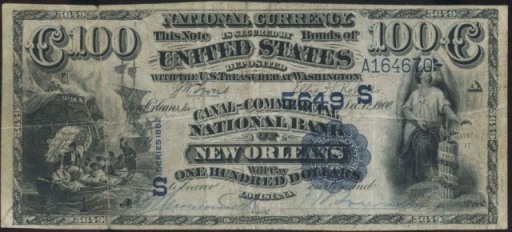
Series of 1882 $100 value backs are extremely rare. Only five are known to exist. To my knowledge, at least one of those is in a museum. The serial number 1 example above recently traded hands for between $200,000 and $300,000. These are so rare because only two banks printed them. 1882 value backs can be from either New Orleans or Dayton.
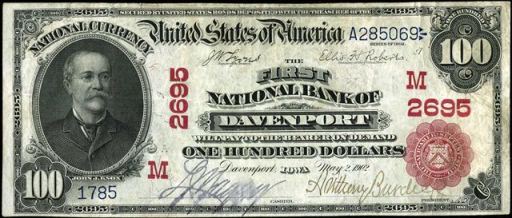
Everyone likes a series of 1902 $100 red seal. There are around 120 known to exist. They are available more often then you might think. A portrait of John J Knox is found on the left hand side of the bill. The best thing about red seals is that they can be from large cities or from small towns. There was really no rhyme or reason behind which banks chose to issue these high denomination notes. Of course notes from small towns will command more money that the same condition note from a larger city.
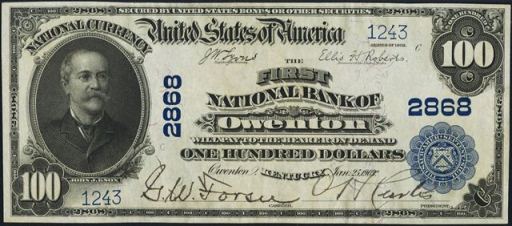
Blue seals from the series of 1902 were printed from 1908 until 1929. In reality, that isn’t that long ago. Many of these notes are still floating around by people who don’t yet realize their value.
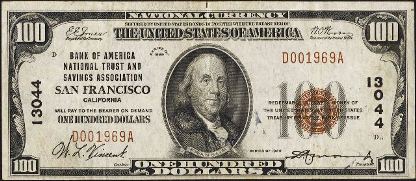
Series of 1929 $100 national bank notes are the only issue of the denomination that is the same size as paper money is today. Benjamin Franklin is featured in the center of each bill. If your note says something about a Federal Reserve bank, then your note is much more common that if it says something about a national bank.
I realize the information above is just the tip of the iceberg. If you need real prices, then please send scans or digital photos of what you have. I am certainly an interested buyer. Sales@AntiqueMoney.com


